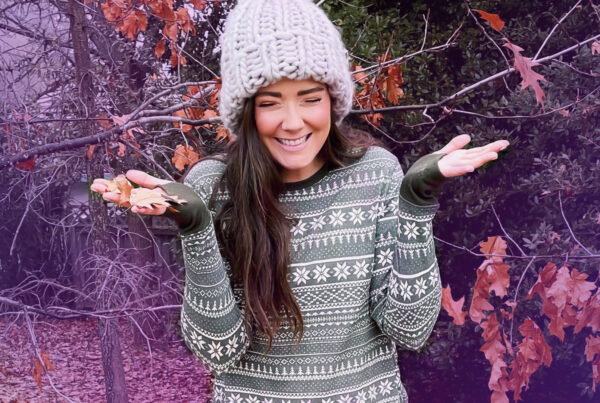Most marketers using influencer marketing rely on social media platforms like TikTok, Instagram, and YouTube to promote their brand. However, Pinterest, which the company describes as a “visual discovery engine for finding ideas like recipes, home and style inspiration, and more,” is still vital for brands and influencers.
Not convinced? Just check out these statistics:
- Pinterest drives 170% more attention than other platforms.
- 85% of weekly U.S. Pinners have purchased based on brand Pins.
- The No. 1 reason people use Pinterest is to find new products and brands.
- Gen Z is the most engaged and fastest-growing audience on Pinterest, representing 42% of Monthly Active Users.
- More than 50% of users see Pinterest as a place to shop.
- In 2023, Pinterest saw a 50% year-over-year increase in buyable items saved to boards.
If you’re a marketer on the fence about using Pinterest to promote a brand, consider these tips on successfully selling products leveraging the platform.
Pinterest marketing tips
Influencers and marketers who promote brands on Pinterest should ensure that items are enticing, discoverable, relevant to the audience, and shoppable. When creating content, consider these tips to help consumers find and resonate with products.
Focus on contextual relevance
Whether using influencer marketing or a promotion featuring user-generated content, ensure the product is relevant to the context. Research shows that advertising placed among content of similar interest increases active attention by 60%.
For example, showing ready-to-eat or quick-prep breakfast foods might be best shared by influencers whose Pins are centered around busy families with school-aged kids. A search for “on-the-go breakfast” turns up sponsored pins for granola bars, cereal, breakfast bars, and oatmeal.
Use the right images
The images your brand uses on the channel, whether they’re created by your in-house designers or influencers who use Pinterest as their main platform, need to engage users who are scrolling through a sea of visuals on the platform. Here are just three ideas to help your product’s visuals demand attention:
Movement
As Pinterest reports, images that indicate movement activate mirror neurons in the human brain, which push up to pay attention more. It’s believed that this comes from our innate instincts to evade predators and other dangers and discern food from inedible items. Brands that want to be associated with speed, energy, motivation, fitness or weight loss should implement movement into ads. Looking for examples? Check out this post for Nike running shoes or a VitaJuicer Blender.
Mystery
Pull your audience in with visuals that create mystery. The human brain is wired to figure out what we’re looking at to make sense of it for survival. Using images that are ambiguous or a bit confusing at first glance can increase attention. Want to see an example of a Pin that might stop consumers in their tracks while their brains do some sorting? Check out this bowl of Legos placed to look like colorful cereal.
Emotion
What emotions do you want your audience to associate with your brand? Excited, peaceful, happy? Ensure that those feelings are captured in your imagery. Whether it’s the calm that comes from the slow pace of camping in the woods, the adventurous joy of trying a new water sport, or the memorable fun of a backyard garden party, represent the emotions that your brand’s products may generate.
Increase representation to broaden your audience
In September 2023, Pinterest announced its industry-first body type technology to increase body representation on the platform. Adding to its suite of AI innovations, the technology uses shape, size, and form to identify various body types in over 3.5 billion images.
Tip: Check out our post on Pinterest’s body type search.
Combined with the platform’s skin tone and hair-pattern technology, the goal is to shape how algorithms increase representation across related feeds and search results for beauty, fashion, and wedding-related content. By increasing representation, consumers can better visualize themselves using products, whether foundation, hair color, clothing, or nail polish.
This applies not only to images in ads but also to Pinterest influencers that you choose for campaigns. Using a diverse mix of ethnicities, races, sizes, ages, and abilities allows your audience to see themselves and demonstrates that your brand cares about inclusivity.
Need an example? Check out Tarte’s post, which features the same lip gloss and lip liner colors on three models with various skin shades.
Optimize with researched keywords
Search for keywords in your brand’s niche and use long-tail keywords in your Pins to help them appear in searches. Check Pinterest’s alternate suggestions when you type your product into the search bar.
Typing “garage storage” into the search bar on Pinterest, for example, will turn up other relevant phrases, such as:
- Garage storage cabinets
- Garage storage shelves
- Garage storage organization
- Garage storage systems
- Garage storage solutions
- Garage storage bins
- Garage storage ideas organizing
Pinterest can be an incredibly important platform in your marketing toolbox if you know how to make your visuals pop, your influencers persuade, and your keywords work for your brand. Invest some time into getting to know the platform and test the waters with engaging imagery to stop scrollers in their tracks. It’s an underestimated resource for brands and influencers, which may help you stand out.
Sources
Swipe Insight. “Pinterest Drives 170% More Attention Than Other Platforms, Study Finds.”
Pinterest Business. “Getting Started.”
Pinterest Newsroom. “Pinterest Investor Day 2023: Growing Engagement and Monetization.”
Pinterest Newsroom. “Pinterest Announces Industry-First Body Type Technology to Increase Body Representation on Platform.”
Influencers:
Looking to partner with industry-leading brands? Create your free profile today.
Marketers:
The world’s biggest brands trust IZEA’s influencer marketing software and full-service solutions. Find out which solution is right for you.








